Dear Insane Children,
Hello again everyone, Alex here with more Design Bible updates.
This time, we’re sharpening our Vorpal Blade(s) and discussing a HUGE subject, and one that I feel is among the most important aspects for any prospective Alice game.
Combat.

Before we get into it, who else really wants to see Alice dual-wielding blades after seeing this image from Omri above?
High-resolution downloads for all of the art and content in this post are available at the bottom as a ZIP folder if you would like to zoom in and see everything in detail.
Or, simply watch the video infographic explaining the core ideas on American’s YouTube channel here.
Let’s go.
Combat Loop Foundation – V1.1
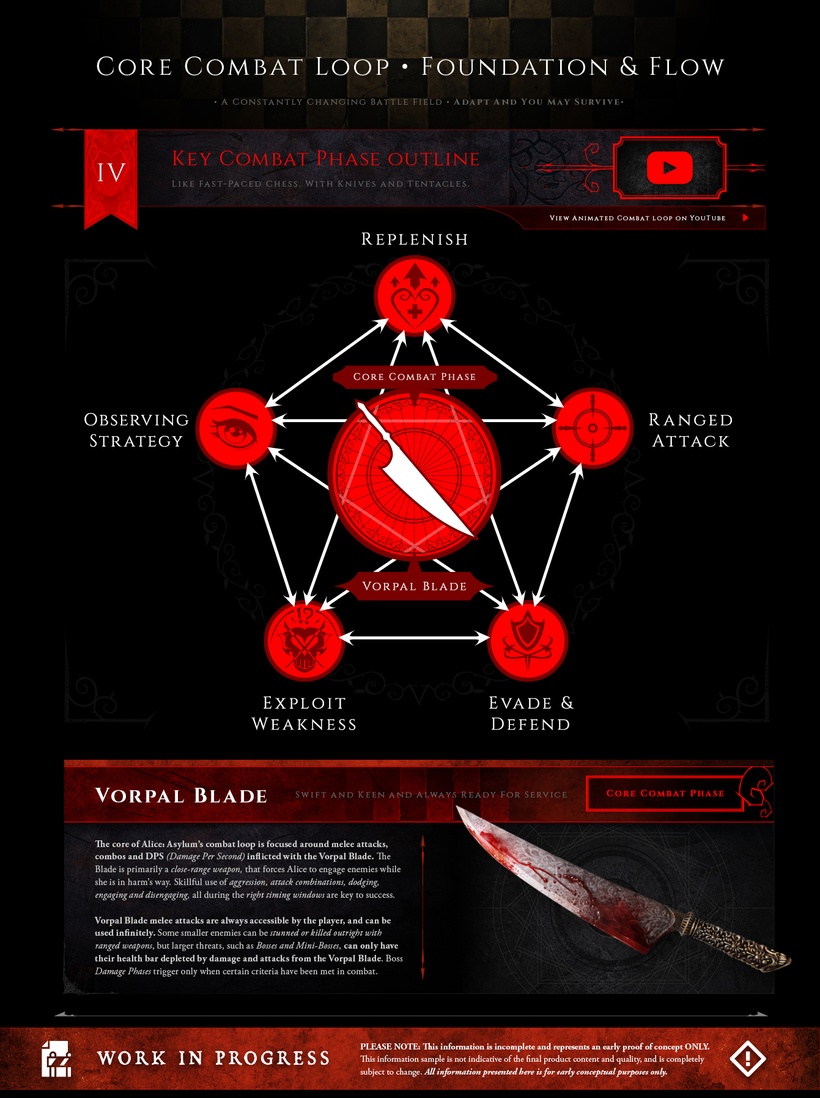
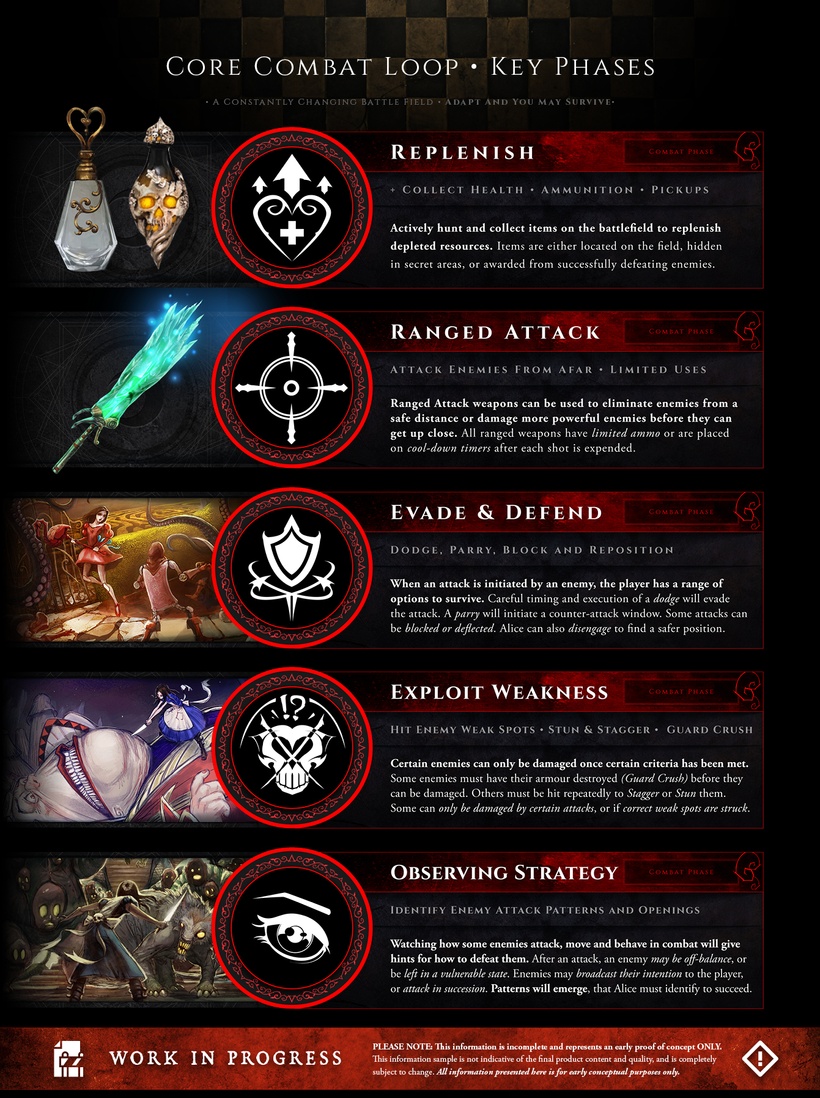
There is a lot covered here in this new DB content, but the core I feel is the pinnacle of the Combat Loop being the Vorpal Blade. We want to be looping you back to combat with the blade at the most critical points in gameplay.
Ranged weapons can trigger stuns, do some damage on larger foes, and are great for strategy and crowd clearance, or may be required to initiate a Damage Phase on a Boss, but at the end of it, we want you up close and personal with enemies, hacking and slashing when it matters most.
A dynamic mix of close-range priority combat. Dashed with ranged attacks to level the playing field or satisfy certain criteria in combat as they arise.
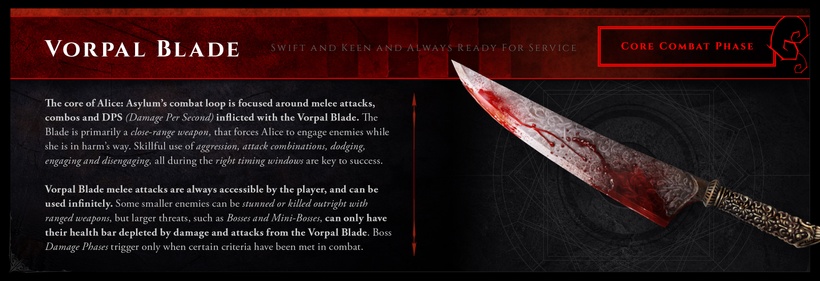
As far as presenting these ideas go, we want to be presenting them in a concise way that shows the thought, care, and potential in the concept. Without overwhelming you in the presentation and execution.
Suitable to digest and enjoy for a fan. Clear for an investor to comprehend. And understood from a potential developer’s perspective from a technical standpoint.
A base understanding and a good pitch are what we’re making here in the Design Bible.
And that base information can be refined and explored fully if we are greenlit in development.
Within the diagram above on the first page, you can see how this combat system could potentially flow.
Each phase triggers in any order. And links to any other phase in succession.
For example;
Example of a Combat Encounter A;
An enemy attacks Alice. The player dodges the attack, watching for enemy tells and weak spots as they strike. Alice lashes out with her Vorpal Blade. The enemy is slain, and Alice replenishes her ammo from spawned items dropped.
Phases: (1. Evasion/Defend, 2. Observation, 3. Vorpal Core Combat, 4. Replenish.)
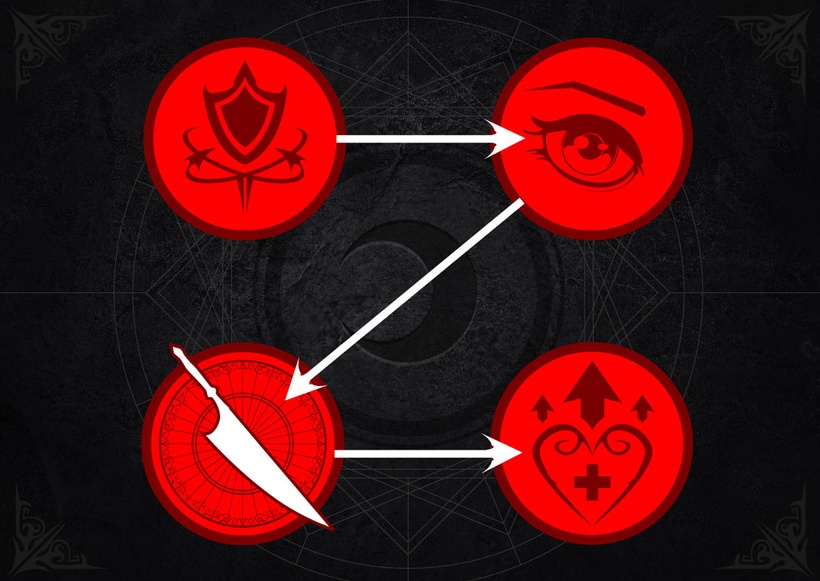
Example of a Combat Encounter B;
Impact. The player is hit. Get out of harm’s way to avoid another attack, and Alice notices another threat incoming. She repositions herself for safety and continues the fight.
Phases: (1. Evasion/Defend, 2. Observation, 3. Evasion/Defend, 4. Observation, 5. Evasion/Defend.)
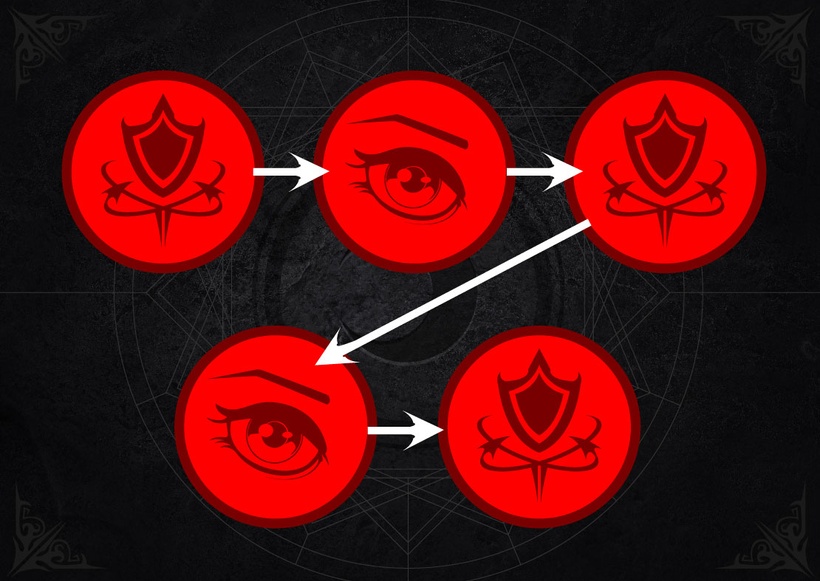
Example of a Combat Encounter C;
Alice staggers a distant enemy with a suitable attack, then fires a shot into a bunch of enemies for crowd control. Alice disengages, then gets up close with the survivors to do damage with the Vorpal Blade. More dodging as enemy blows rain in. She tries to parry an attack in order to stagger an enemy. But… {FAIL} YOU’RE HIT! Time to find health, time to restock ammo, re-assess, more baddies flooding in. What do you do next? How do you react?
Phases: (1. Ranged Attack/Exploit, 2. Ranged Attack, 3. Evasion/Defend, 4. Vorpal Core Combat, 5. Evasion/Defend, 6. Evasion/Defend, 7. Replenish, 8. Observation.)
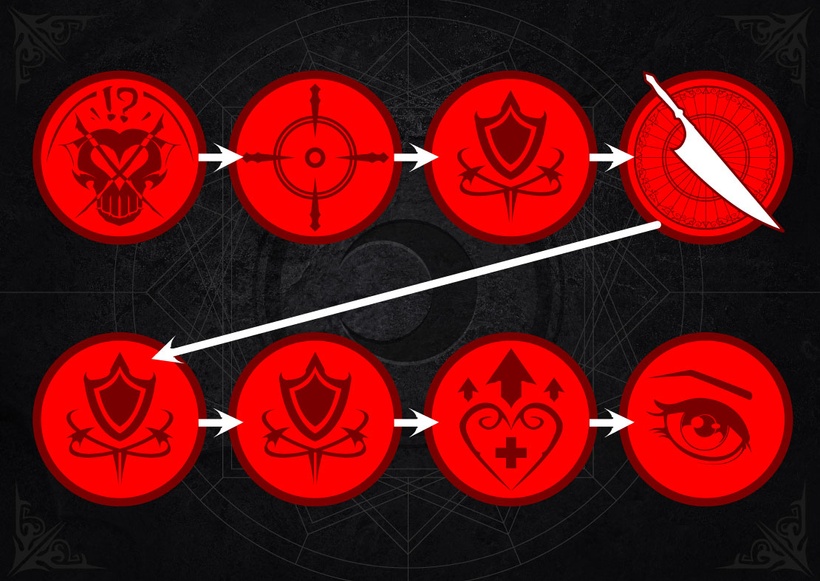
The system above is created using the parameters outlined in the Combat Loop. It can bounce around these phases and decision processes as many times as needed to complete a combat encounter.
Far fewer decisions to make, and more time to do so on Easy difficulties.
More choices to make, and higher stakes in quick succession on Harder difficulties.
Add in the Rune/Modifier abilities, (currently, 12x at time of writing, equip any 2x in game-play), plus limited special states of Hysteria/Inferno and their individual mechanics, plus the arsenal of ranged and melee weapons, each with primary and secondary modes… not to mention combo attacks and melee combat inputs at the core with the Vorpal Blade…
Alice: Asylum on paper has a massive potential combat tool kit.
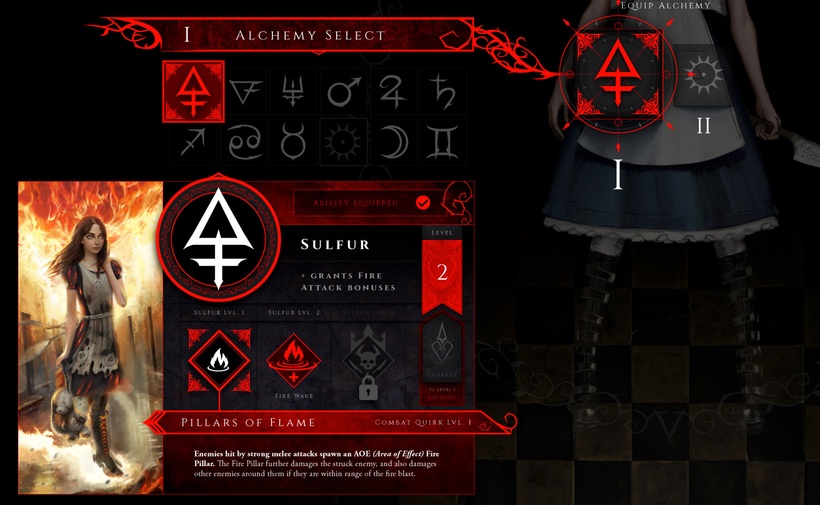
These ideas are either narrowed or expanded when we use that combat toolkit in the landscape of the Gameplay Difficulties we mentioned in earlier posts.
Lower difficulties = unlimited ammo and less aggressive enemies. (Spam, have fun).
Harder difficulties = Git Gud or get rekt. PS; watch your ammo. (The fun is in the challenge).
Again, accessibility and broad appeal is American’s preferred approach to Game Design.
So we’re taking that on board in every facet as we move forward with the Design Bible.
We give you the choices.
You choose how you want to play.
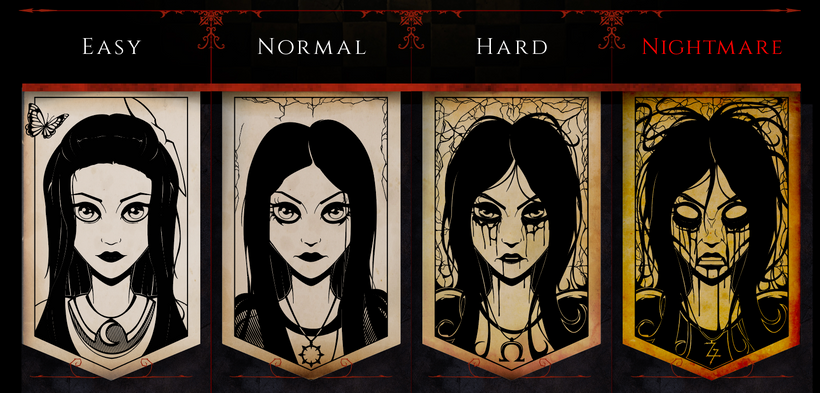
There’s a LOT more to go to design and capture the full Combat Loop on paper, but it is definitely all coming together cohesively, one piece, and one gib at a time.
I am very excited to share more potential violence with you all as we go.
Next up, I am deep-diving into presenting each of the weapons, modifiers, and potential attacks in the supplementary combat systems in the Design Bible as we go, alongside the key narrative content. A big one to work on, so it might be a while until the next post.
But for now?
I think we have a solid foundation to play with and present here and plenty of good discussion points.
Let us know what you think.
Sound off in the comments.
—–